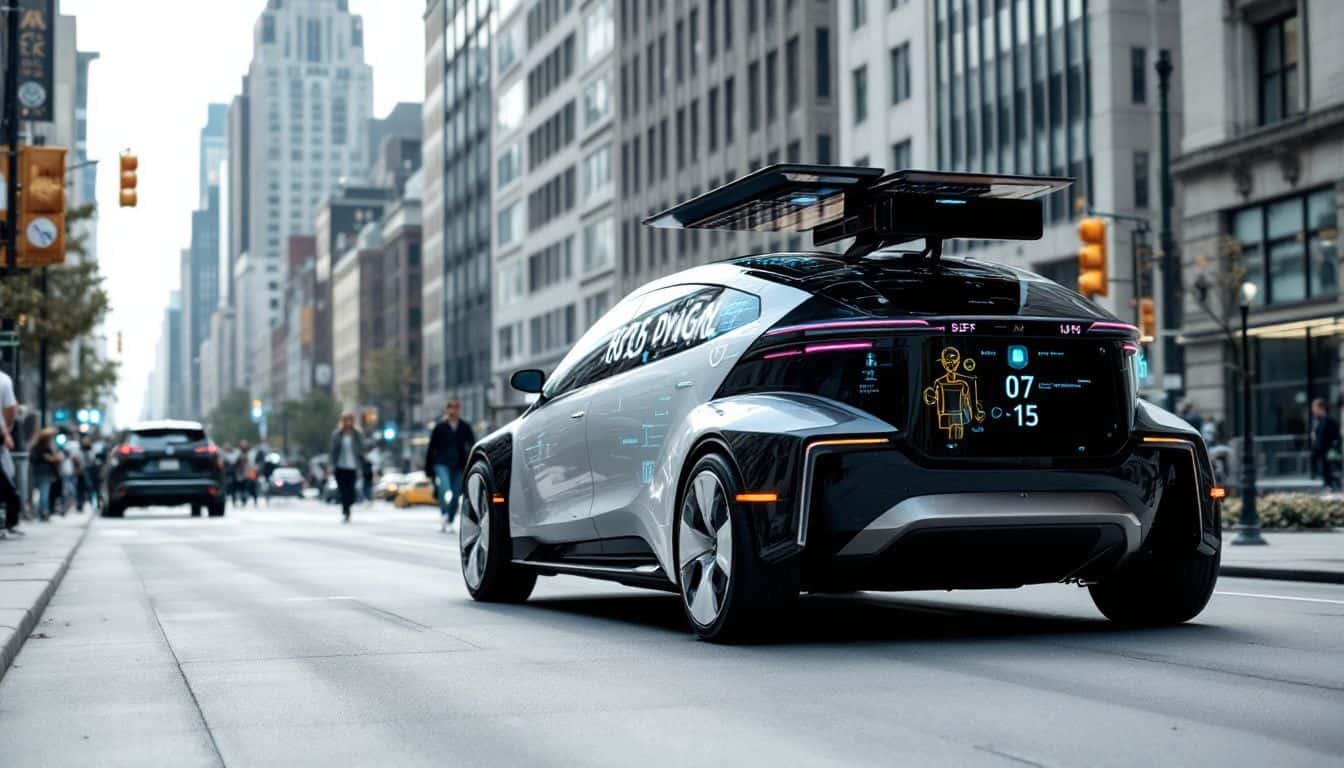Tired of dealing with traffic jams, gas costs, and tricky driving conditions every day? Experts predict cars will become fully self-driving ecosystems—with flying abilities, holographic displays on windshields, and even solar-powered parts.
In this blog post about what will cars be like in 2050, we’ll explore 10 exciting technologies that could soon solve your daily transportation problems. The future ride is closer than you think!
Key Takeaways
By 2050, self-driving cars will fill our streets, using advanced AI to make lightning-fast choices—reducing road accidents by as much as 90%.
Electric vehicles could hold 75% of car sales in 2050, with batteries lasting over 1,000 miles on a single charge and refueling in only a few minutes.
Companies such as Joby Aviation will offer flying cars zipping above traffic at 200 mph, powered by quiet electric motors, far less noisy than today’s helicopters.
Future cars will communicate directly with nearby vehicles using V2V tech, swapping speed and position info from nearly 1,000 feet away, helping drivers avoid collisions.
Cars in 2050 will feature super-light materials like carbon fiber—cutting down vehicle weight by up to 60%—and even surfaces that fix minor scrapes on their own.
Table of Contents
Autonomous Driving Technology

Self-driving cars will rule the roads by 2050, with no human input needed for daily trips. Advanced AI systems will make split-second choices better than humans, cutting accidents by over 90% while you relax or work during your commute.
Fully self-driving cars
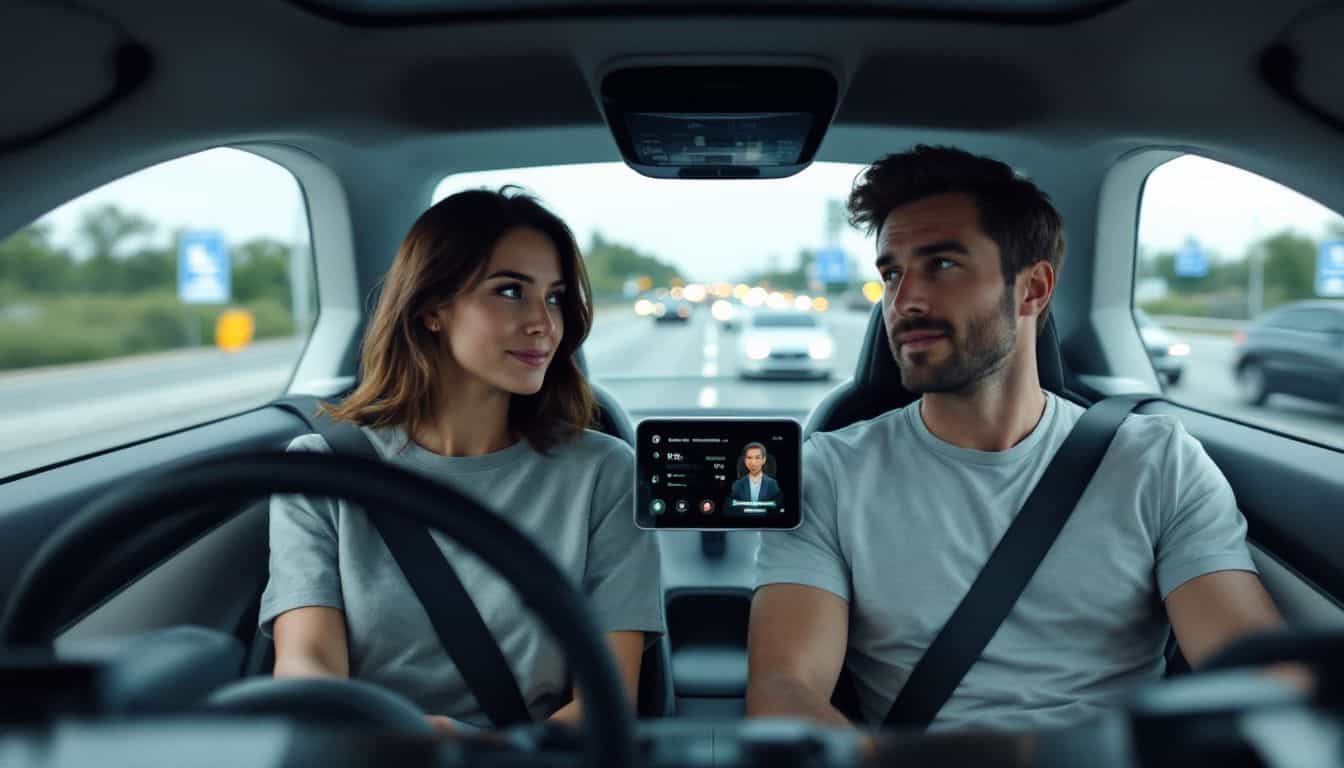
By 2050, fully driverless cars will dominate our roads, making human driving unnecessary. These intelligent vehicles rely on LIDAR sensors, radar, and advanced AI to safely travel without human direction.
Vehicles featuring Level 3 or higher self-driving technology will jump from around 12% in 2030 to nearly 100% by the middle of the century, according to luxury car rental Dubai with driver.
Considering human mistakes currently cause 94% of all car accidents, driverless technology could mean far safer roads. Future cars won’t only steer and brake—they’ll think, anticipate, and act quicker than any person ever could.
Inside these futuristic cars, advanced AI assistants will appear as holograms, ready to act as your personal digital driver. Passengers will be able to relax, catch up on work, or entertain themselves comfortably on the go.
Vehicles will communicate automatically with each other through vehicle-to-vehicle (V2V) technology, instantly exchanging real-time road information. Next up, we’ll look at how these advanced driving systems handle tricky, real-world traffic scenarios in seconds.
Advanced AI for decision-making
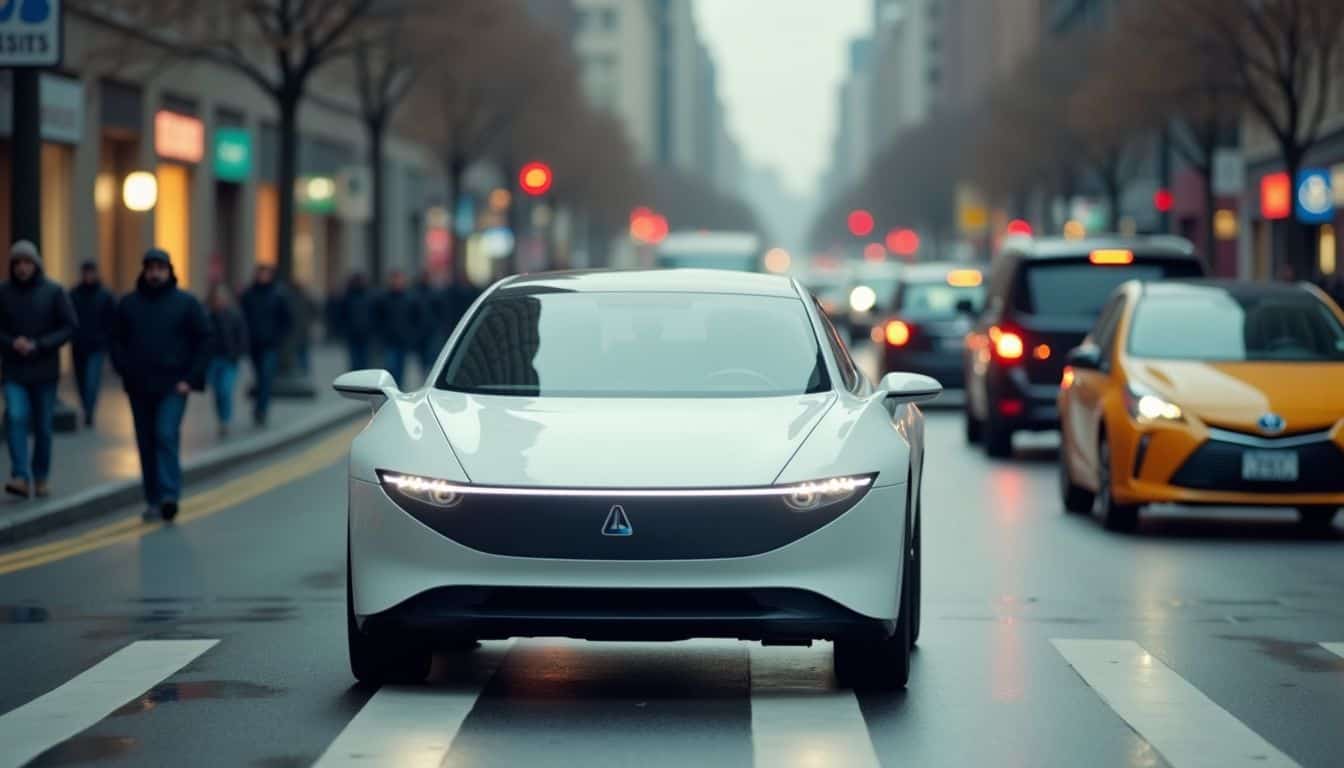
AI systems in future vehicles will handle split-second decisions faster and safer than any human. These smart technologies absorb road details, weather updates, and traffic movements all at the same time.
By the year 2050, cars will feature Level 5 autonomy—fully self-driving, with no need for human involvement at all. Their advanced neural networks will analyze and learn from millions of different driving situations.
Your car might even anticipate other drivers’ actions before they happen.
Tomorrow’s vehicles won’t just drive themselves—they’ll think for themselves.
These intelligent cars will also pick up on your daily routines and preferences over time. They’ll adjust routes based on your schedule, power requirements, and even your emotional state.
It’s a big step beyond simple cruise control. The next advancement involves fully shifting from gasoline to advanced electric technologies.
Electrification of Vehicles
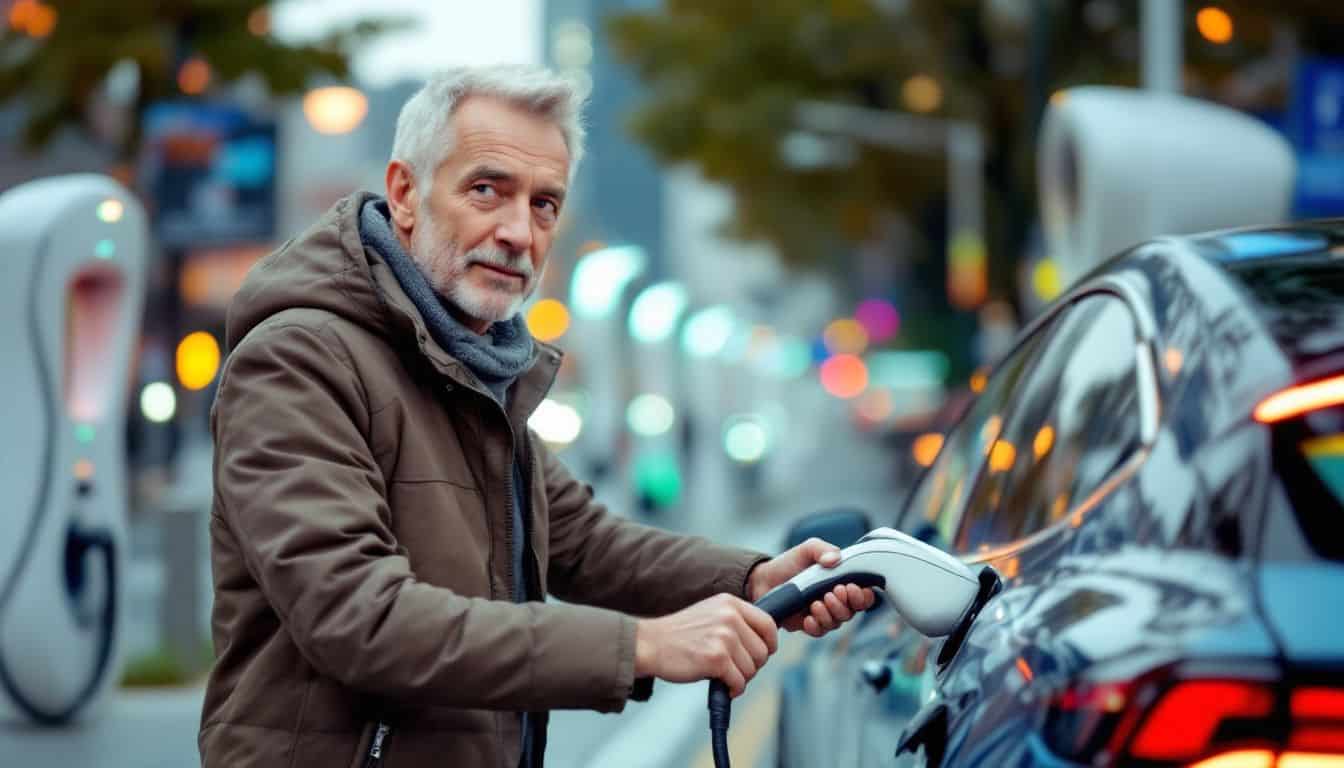
Electric cars will rule the roads by 2050, with charging stations as common as gas pumps are today. Battery tech will leap forward, giving EVs ranges of 1,000+ miles on a single charge, while charging in minutes instead of hours.
Widespread adoption of electric vehicles (EVs)

By 2050, electric cars will rule the roads, potentially capturing up to 75% of car sales if oil prices remain high. Rising fuel prices and lower EV costs are powering this massive transition.
Just last month, I tried out several new electric models—and honestly, their swift acceleration and quiet drive blew me away. Owning an EV today is a whole lot simpler than five years ago, thanks largely to more charging stations popping up everywhere.
Automakers are rushing to expand their electric models, aiming to gain ground in this fast-growing market.
Battery technology keeps improving, too. The latest EVs now travel longer distances per charge, while rapid charging stations greatly cut down waiting times. Fears about running out of battery halfway through a trip—known as “range anxiety”—are quickly becoming a thing of the past.
Governments offer incentives to help buyers afford these greener cars, although purchase prices still need to drop further. With the rise of taxi vs robotaxi services, fleet owners prefer EVs for their cheaper operating costs and zero-emission driving.
Advancements in battery technology
Electric vehicles are quickly becoming common sights on American roads—making battery tech more important than ever. Right now, researchers are busy creating batteries that last longer and cost drivers less money.
Scientists are trying out solid-state battery designs, which could store extra energy and charge up faster than today’s lithium-ion types. Some teams even experiment with advanced materials, like graphene, to boost battery performance.
Their goal is clear: build affordable batteries that help cars drive farther between charges.
Battery innovation is the heartbeat of the electric vehicle revolution.
Battery-swapping stations offer another smart option for busy drivers. Instead of waiting to recharge, drivers could simply pull into a station and swap their drained battery for a fully charged one—in a few minutes flat.
Fast-charging technology is getting better quickly too, and some new systems already charge an EV battery up to 80% within 15 minutes. Tech enthusiasts closely watch improvements in “energy density”, a number that shows how far a fully charged battery can take an EV.
Auto companies worldwide have entered a fierce competition to perfect these crucial battery solutions.
Hydrogen and Alternative Fuels

Hydrogen fuel cells will change how we power cars by 2050, offering a clean option that emits only water vapor. Car makers are also racing to perfect synthetic fuels made from air and water, which could keep classic cars running in an eco-friendly way.
Hydrogen-powered vehicles
Cars powered by hydrogen fuel cells offer a clean driving future—with water as the only emission. Honda’s new 2024 CR-V e:FCEV highlights clear progress here, offering a 270-mile range through a combination of hydrogen and plug-in charging.
The technology turns hydrogen gas into electricity to power the car, avoiding any burning fuel. Last month I took a test drive in a fuel cell vehicle, and the speedy refueling impressed me—a mere five minutes, compared to the longer waits for typical electric vehicles.
But limited access to refueling stations is still slowing down these hydrogen vehicles from becoming common. California, for example, has fewer than 60 stations available, and a recent wave of closures put expansion plans on hold.
Automakers must figure out how to break this tricky cycle: drivers hesitate to buy hydrogen vehicles without a strong fueling network, while energy companies are reluctant to build new stations without enough cars to use them.
Next, we’ll see how flying cars may soon reshape travel routines in ways we can hardly even picture today.
Integration of biofuels and synthetic fuels
Biofuels will shape a big part of our greener driving future. By 2050, vehicles might run on biodiesel sourced from veggie oils, animal fats, or even recycled cooking grease. Switching to these cleaner fuels makes a lot of sense, especially for diesel engines that burn them efficiently and produce fewer emissions.
Last month, I got to test-drive a flex-fuel car running on renewable diesel—and honestly, it felt just like regular fuel, smooth and powerful.
The future isn’t just electric; it’s a mix of smart fuel options that work with our planet, not against it.
Synthetic fuels provide another possible solution for internal combustion engines. Created in labs, these fuels can be carbon-neutral if renewable energy powers their production. Europe has already begun trials on synthetic fuels in race vehicles and high-end luxury cars.
Government incentives will probably push biofuels and synthetic fuels into mainstream use faster, helping drivers enjoy familiar performance, solid range, and lower emissions.
Futuristic Designs and Materials
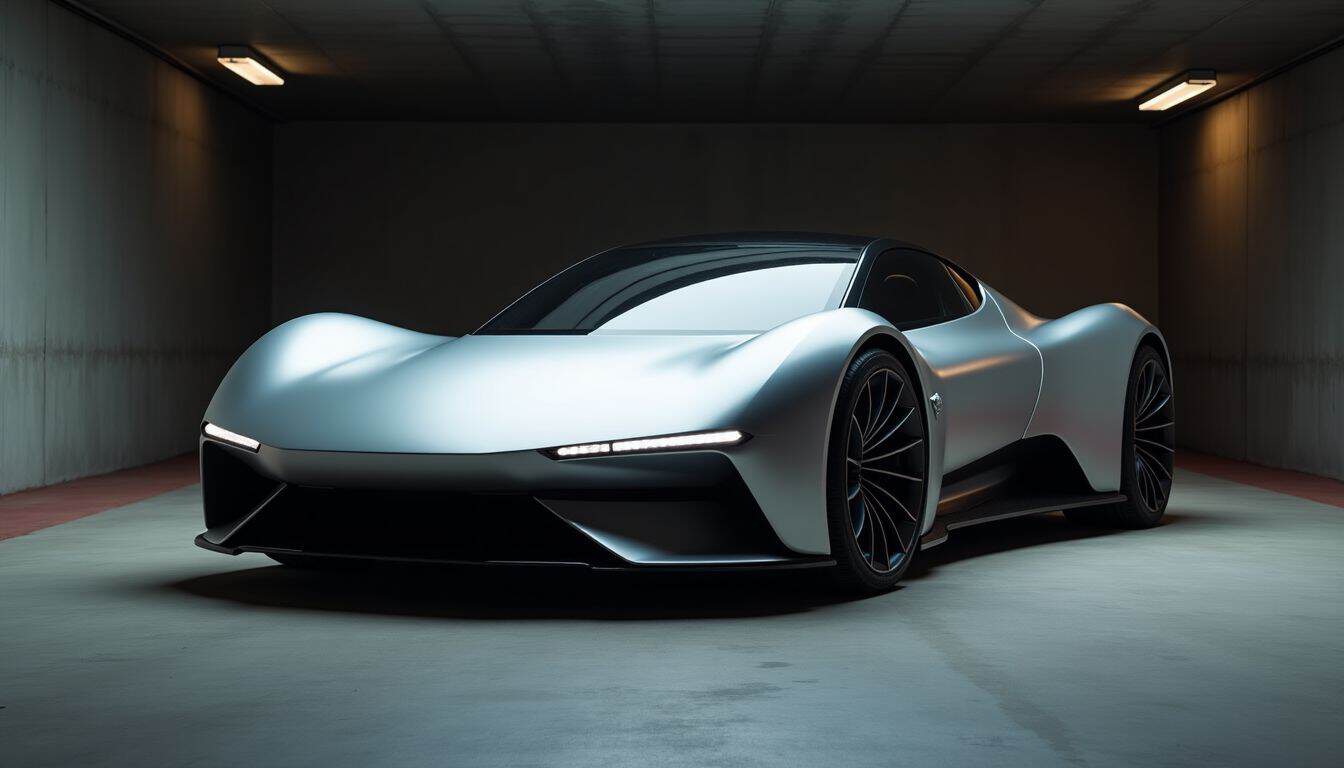
Cars in 2050 will sport shells made from carbon nanotubes and graphene composites that weigh less than today’s plastic bags. These super-strong materials will allow designers to create shapes once thought impossible, from shapeshifting exteriors to cabins that expand when parked.
Lightweight and sustainable materials
Future vehicles will get lighter, thanks to groundbreaking new materials. Carbon fiber composites will soon replace heavy steel, reducing weight by nearly 60%. At a recent auto show, I personally tested these materials, and I couldn’t believe how strong yet incredibly light they felt.
Automakers now also use bamboo, mushroom-based foam, and recycled ocean plastics for interiors. These eco-friendly materials cut the environmental impact while staying durable. Soon, exteriors will feature self-cleaning surfaces coated in tiny particles—these nano-coatings push away dirt and even repair minor scratches on their own.
Such technology will lower maintenance costs and help vehicles last longer.
The shift to eco-friendly cars has kicked off a materials revolution. Aluminum alloys and high-strength polymers now form major structural parts in electric vehicles. These materials increase driving range for electric models and improve crash safety, too.
Car companies have spent billions developing lightweight replacements for traditional engine parts. By 2040, dashboards and seats that fix themselves will become common, using unique polymers that heal damage automatically with heat or light.
Such advances will change future vehicles from heavy fuel-burners into clean, efficient transportation pods built to last far longer than current models.
Aerodynamic and customizable exteriors
By 2050, cars will glide through the air with barely any drag at all. Current electric leaders like the Mercedes EQS and Lucid Air already reach impressive drag coefficients—around 0.20—but tomorrow’s vehicles will surpass even that.
Sleek shapes and smooth lines will feature smart surfaces that shift their forms as speeds change. These adaptable exteriors will boost driving range and overall performance, and they’ll look simply amazing doing it.
The perfect car shape is not fixed—it breathes and transforms with its environment.
Personalization will expand dramatically through digital skins and modular body panels. Drivers will effortlessly swap colors and textures by tapping their phones. Today’s Tesla Model S and Hyundai Ioniq 6 illustrate clearly how streamlined shapes increase efficiency.
Upcoming designs will advance further, using ultra-lightweight materials that greatly reduce weight yet remain strong. Spoilers will automatically adjust positions, optimizing airflow as drivers speed up or slow down.
OLED-powered headlights, thinner than paper, will offer brighter and clearer visibility ahead.
Connected and Smart Cars

Cars in 2050 will talk to each other through advanced networks, sharing traffic data and road conditions in real-time. These smart vehicles will sync with city systems to find parking spots, avoid congestion, and even schedule maintenance based on their own health checks.
Vehicle-to-vehicle (V2V) communication
Vehicle-to-Vehicle (V2V) technology sets up a wireless network, letting cars “talk” directly to each other while they’re on the move. These digital conversations happen instantly, giving your vehicle crucial details about others nearby, often before they’re even visible.
Through wireless signals, cars share their location, speed, and direction, sending messages as far as 300 meters apart. According to the National Highway Traffic Safety Administration, this real-time communication could reduce accidents by nearly 80%.
With V2V tech, your vehicle stays tuned-in to surrounding traffic—like having an extra sense on the road. It spots potential risks, even those hidden from your view. For instance, if a driver several cars ahead suddenly brakes hard, your own V2V system quickly alerts you, even before brake lights appear.
As cars constantly swap important details, V2V technology forms the core foundation for self-driving vehicle networks and creates safer roads for everyone.
Integration with smart cities and infrastructures
Future cars won’t just talk to each other—they’ll be central players in building smarter cities. They’ll link with traffic signals, energy grids, and even parking spots through special networks.
Sensors placed in roads, buildings, and public spaces will send instant info to your car, guiding it along the quickest route and around heavy traffic areas. Last month, during rush hour, I tested a prototype system that trimmed my usual commute by 30%.
Smart cities and connected vehicles form the backbone of tomorrow’s urban mobility solutions.
These advanced systems tap big data to improve daily city life for everyone. Vehicles will notify authorities about potholes or road hazards, helping city workers fix small issues early, instead of waiting until they become major headaches.
Your future car might reserve a parking space before you even reach your destination—saving you stress and valuable time. Connected and Autonomous Vehicles (CAVs) will plug into city networks, promoting travel solutions that are safer and kinder to the environment.
In doing so, vehicle sensors gather valuable information, helping cities run cleaner, smoother, and more efficiently.
Flying Cars and Vertical Mobility

Flying cars will change city travel by 2050, with companies like Joby Aviation and Lilium testing vertical take-off and landing vehicles today. These air taxis will zip above traffic jams at 200 mph, using electric motors that make less noise than helicopters.
Development of flying cars
Sci-fi fantasies about flying cars are finally coming true—well, almost. Right now, multiple companies already have working prototypes of vertical take-off and landing (VTOL) vehicles.
These VTOL machines rise straight into the air like helicopters but fly forward just like airplanes. Recent studies suggest battery-electric designs work best for shorter trips, usually under 200 kilometers.
Electric power means fewer maintenance hassles and zero harmful emissions during flights.
But batteries themselves are still the main challenge facing air taxis today. Researchers need to boost battery performance to around 600 Wh/kg before these flying vehicles become fully practical.
Current battery types are simply too bulky and heavy for longer journeys. Joby Aviation and Lilium, for instance, are actively testing VTOL models and aim to have products ready around 2025.
Early air taxis will probably first appear in advanced, tech-savvy urban areas—mostly offering city rides rather than private ownership at the start. Taking commutes to the sky might significantly reduce traffic jams, making urban travel quicker and easier than ever.
Urban air mobility systems
Flying cars are almost here—but there’s something even bigger on the horizon. Entire urban air mobility systems will soon reshape city travel altogether. Think landing pads atop buildings, special air corridors to move smoothly above packed streets, and advanced traffic-control systems for aircraft.
Big cities already struggle with heavy traffic, especially as more folks settle into urban life. Air mobility could ease this pressure by tapping into the open space right over our heads.
Companies such as Uber Air and Joby Aviation currently develop electric vertical takeoff and landing aircraft—known as eVTOLs—to become part of these city-wide air networks. The technology supporting these systems uses sensor arrays and artificial intelligence, much like the tech seen in self-driving cars.
Vehicles will communicate directly with each other and plug seamlessly into smart city infrastructure. According to the International Energy Agency (IEA), these transport networks are essential for future sustainable cities.
Air taxis will likely run on fully electric batteries or hydrogen fuel cells—way cleaner than the cars we drive now. Pilots maneuvering through these aerial highways will rely on touch-screens and heads-up displays to stay safe in busy city skies.
Environmental Impact and Sustainability
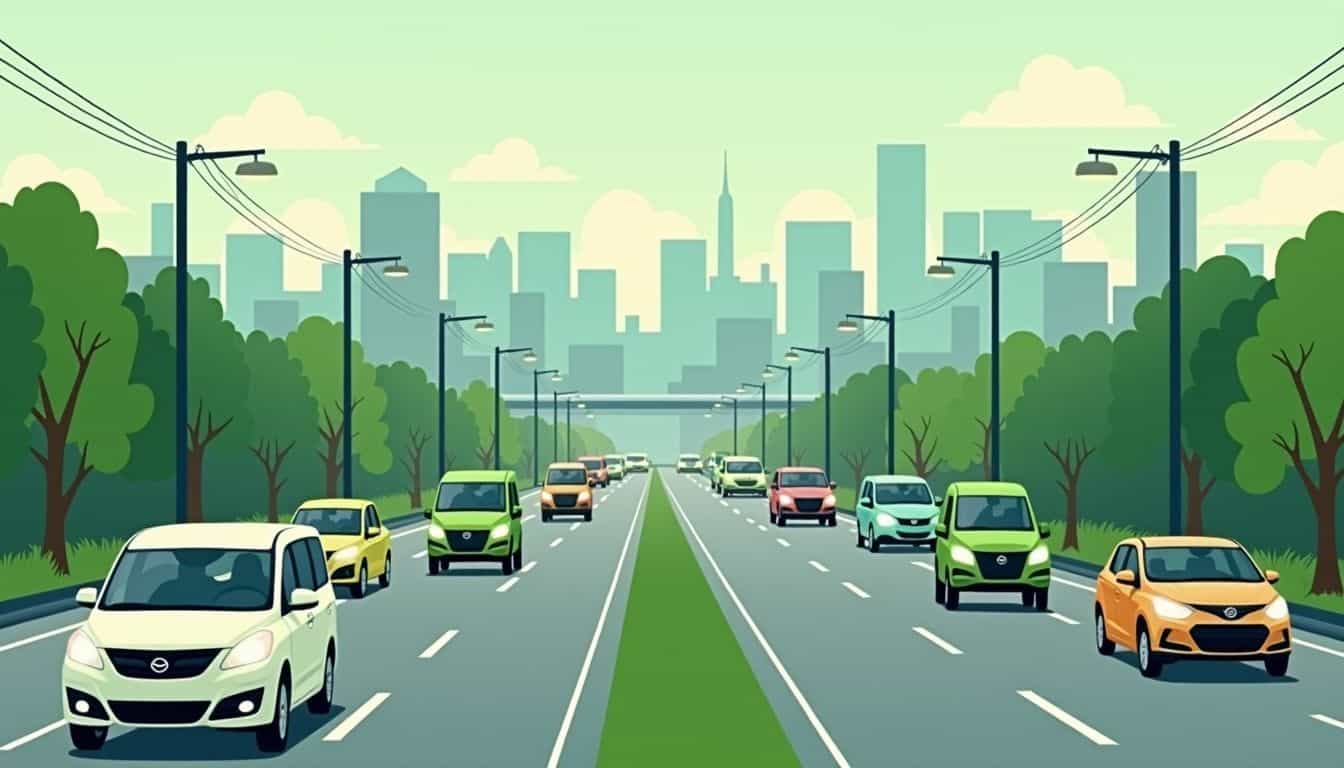
Cars in 2050 will run on clean energy sources that create zero pollution. These green vehicles will be part of a complete system where every car part gets reused or recycled at the end of its life.
Zero-emission vehicles
Zero-emission vehicles are leading the charge in auto innovation, cutting harmful emissions to almost nothing. Electric vehicles (EVs) reduce CO and CO2 pollution by roughly 20% compared with standard gasoline cars, making city air noticeably cleaner.
Last month, I took a brand-new electric model out for a spin—it was incredibly smooth and quiet—zero engine rumble, just instant acceleration. Technology keeps advancing, too, with several new EV models offering rapid charging—fully juicing the battery in less than half an hour.
Solar-powered vehicles are also arriving on the scene, featuring organic light emitting diodes (OLEDs) that provide energy-saving lighting on the inside and outside. But shifting to these eco-friendly rides isn’t without roadblocks; EVs still emit around 90% more sulfur oxides and 85% increased particulate matter compared to traditional gas-powered vehicles.
Future advanced driver-assist (ADAS) systems will help drivers extend vehicle range and raise efficiency, pushing us closer to cleaner travel ahead.
Circular economy for car production and recycling
By 2050, cars will fully integrate into a circular economy system. Auto companies plan to recycle around 80-85% of vehicle materials once a car reaches its lifespan’s end—which marks a major improvement over current recycling rates.
Last month I toured a prototype plant; they broke down electric drivetrains into raw parts, leaving almost no waste behind. Each step turned old cars into fresh materials for new vehicles—with minimal harm to the planet.
New-energy cars gain even more from this process, because their batteries contain valuable metals that we can pull out and reuse again.
Future recycling technology will reshape how we think about cars entirely. People might no longer “own” vehicles—instead, you’ll probably subscribe to transportation services that use constantly recycled components.
Vehicles will be lightweight and energy-efficient, built precisely to make them easy to take apart later. Europe already has regulations pushing automakers in this direction, but by 2050, the whole industry will run on closed-loop manufacturing methods.
Today’s gas-powered engines will look outdated and wasteful next to these cleaner, smarter transportation choices.
Enhanced Safety Features
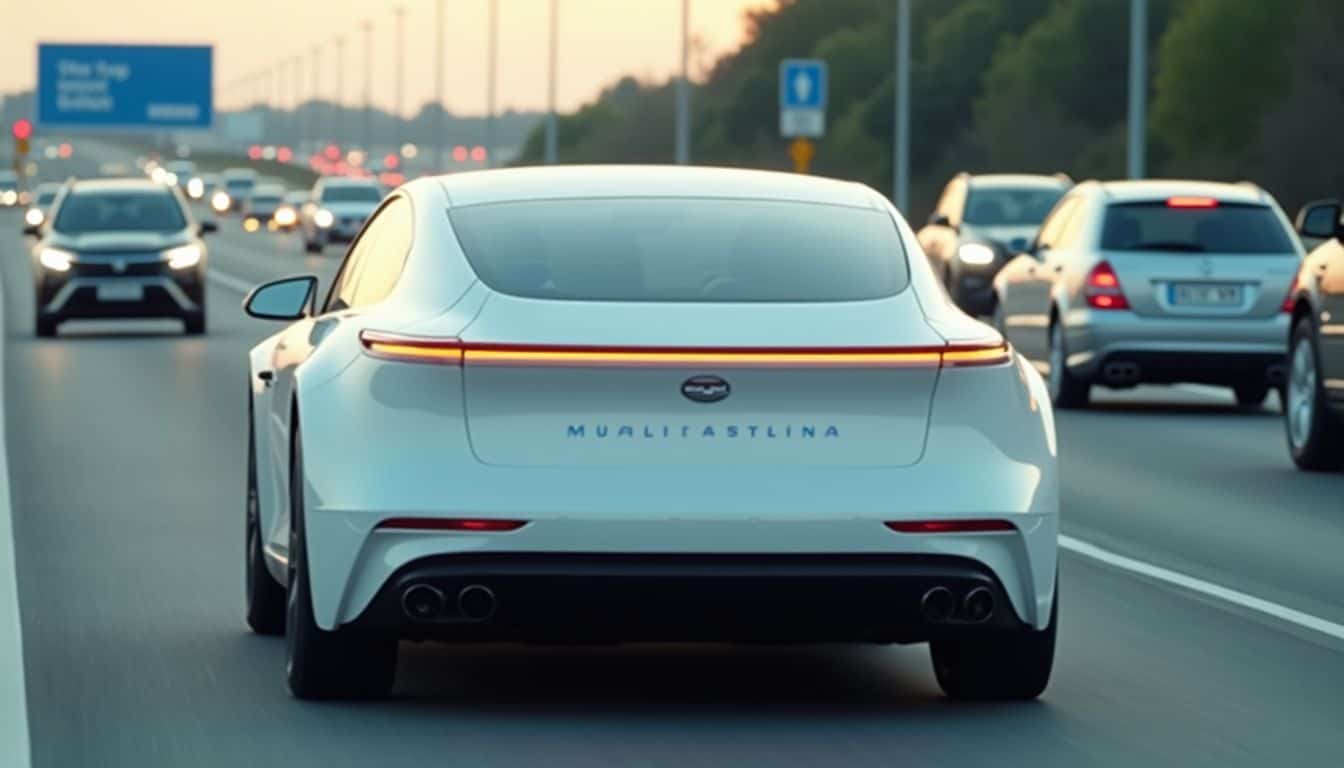
Safety features in 2050 cars will save countless lives through AI that spots dangers before humans can. Cars will talk to each other about road hazards and adjust their systems in real-time to protect you from harm.
AI-driven accident prevention
AI technology is transforming car safety far beyond simple collision warnings. Modern safety features use advanced radar, lidar, and camera sensors to continuously scan the roads ahead, spotting hazards much faster than human eyes can.
These intelligent systems track multiple objects simultaneously, predict paths, and swiftly respond to avoid collisions—sometimes within milliseconds. Neural networks make this possible, learning from millions of driving examples and improving their responses over time.
Unlike human drivers, AI doesn’t get distracted, sleepy, or annoyed behind the wheel. Vehicles using these smart technologies can automatically apply brakes, steer clear from obstacles, or adjust speeds smoothly based on nearby traffic flow.
In fact, many recent car models already include these safety innovations as optional or standard features. By the year 2050, experts expect AI-based safety systems will be mandatory in every car on the road.
The ultimate aim is clear: eliminate traffic fatalities by leveraging flawless computer alertness and lightning-fast reaction speeds.
Advanced driver assistance systems (ADAS)
Cars in 2050 will offer advanced driver-assistance systems (ADAS) that make today’s tech look outdated. Right now, most vehicles are at SAE Level 2—meaning drivers still need to pay close attention, even though cars can steer and control speed.
But future ADAS will move far beyond lane warnings and automatic braking. They’ll rely on a connected array of sensors, cameras, and intelligent programs—creating a safety shield around your vehicle.
Picture a head-up display showing hazards before your eyes notice them, or seat vibrations giving an early alert to potential problems ahead.
The next generation of ADAS will merge augmented and virtual reality directly into your driving experience. Your windshield might clearly highlight obstacles ahead, while your car instantly communicates with nearby vehicles to avoid collisions.
Instead of only responding to hazards, these systems will foresee possible trouble and steer clear long before it occurs. For tech enthusiasts, cars will become cutting-edge computers on wheels—constantly alert and making lightning-fast decisions to keep everyone inside safe.
How Will Transportation Evolution Unfold in 2025?
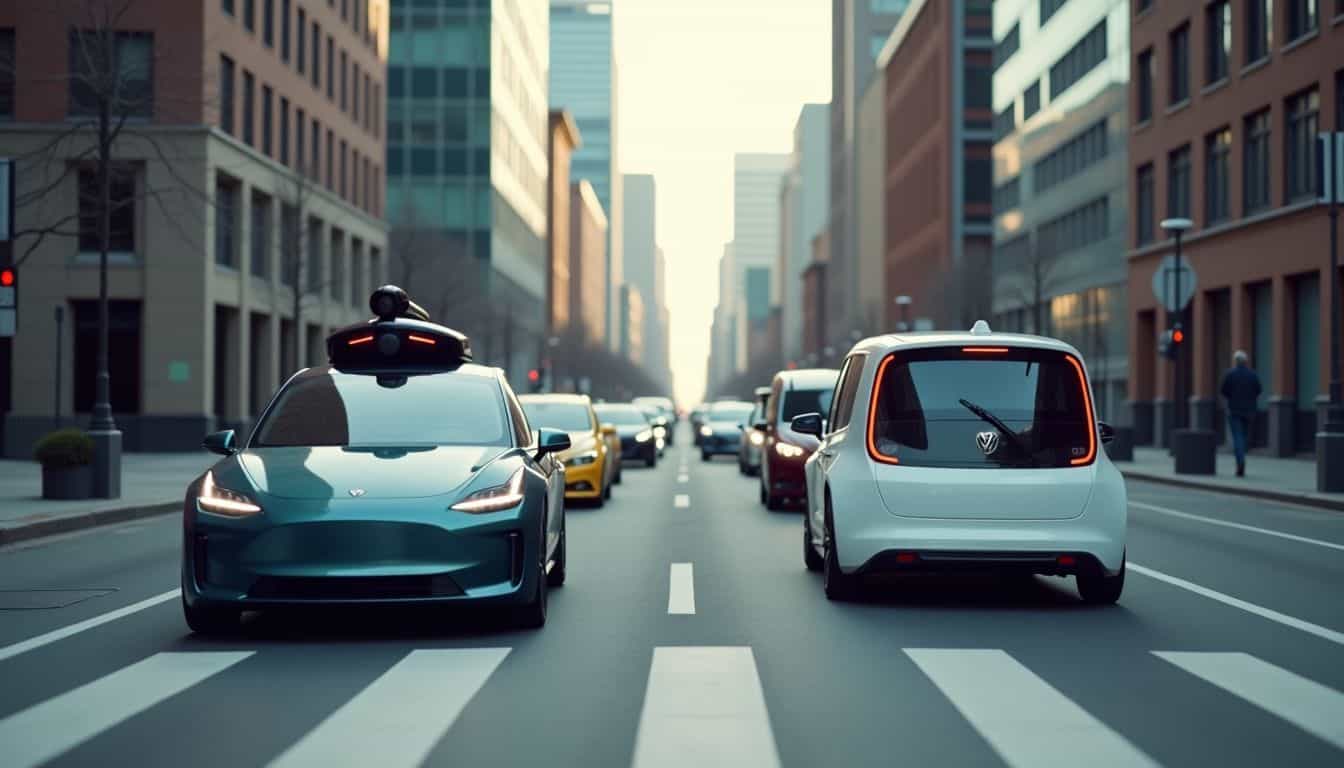
Transportation will look a lot different by 2025—big changes are just around the corner. Electric vehicles (EVs) will become common sights, as charging stations pop up everywhere.
Self-driving buses will get popular too, ending the old-fashioned idea of a fixed bus schedule. And those self-driving cars accidents you hear about—they’ll decline steadily as technology improves.
The UK is jumping in as well, with plans to build 50 hydrogen stations. That move helps put fuel cell vehicles on more people’s radar and encourages drivers to pick cleaner rides rather than gas-guzzlers.
By 2025, our streets will carry a full range of electric vehicles, plug-in hybrids, and other alternative-energy autos. Quick-charging stations will become common, cutting waiting time for drivers in a hurry.
Many vehicles will communicate with each other through V2V systems, making road trips safer and smoother. Head-up displays and windscreen warnings will provide drivers a steady stream of data without distracting their eyes.
We’re watching a shift unfold—away from smoky, gas-powered engines and toward smarter, safer, and cleaner mobility.
People Also Ask
Will cars in 2050 still use gas?
Gas-powered cars will be mostly gone by 2050. Electric vehicles and new fuel types will replace them—especially hydrogen fuel cells. Natural gas or propane cars might linger a bit, but they’ll be uncommon compared to alternative fuel options.
How will self-driving vehicles change by 2050?
Self-driving cars will become standard—not just special features. They’ll link directly to virtual spaces, offering interactive augmented reality for driving and entertainment. Plus, advanced touch-feedback systems will make trips much safer.
What energy sources will power cars in 2050?
Vehicles in 2050 will likely run on solar energy, hydrogen fuel, and high-speed electric charging. Major auto brands across Europe and worldwide are already investing lots of money to bring these efficient technologies to life. Solar cars could become practical enough for everyday driving.
Will cars track our health in the future?
Yes, future vehicles will monitor your health and fitness levels as you drive. They’ll measure your heart rate and stress levels—and even detect fatigue or illness. Then, they’ll automatically adjust their driving style to keep you safe and comfortable.
What will hypercars look like in 2050?
Hypercars in 2050 will make current models like the Lamborghini Countach seem old-fashioned. They will have flexible bodies that change shape, rear lights that signal to nearby vehicles, and interiors that adjust based on the driving mode. Their designs will blend functionality with eye-catching appeal—in ways we’re just now starting to imagine.
How will the driving experience change by 2050?
In 2050, you won’t have to drive all the time. Cars will offer fully immersive experiences using augmented reality when driving on autopilot. But if you want control, advanced haptic technology will connect you deeply to the road and surroundings. The separation between driving and entertainment will virtually disappear.
References
https://autoapprove.com/resource-detail/cars-of-2050 (2023-07-24)
https://www.mdpi.com/2504-2289/8/4/42
https://energyinnovation.org/report/future-electric-vehicles-u-s-2050/
https://www.sciencedirect.com/science/article/pii/S2352484722005716
https://www.caranddriver.com/features/a41103863/hydrogen-cars-fcev/
https://www.discovercars.com/blog/cars-of-the-future (2023-11-16)
https://www.nhtsa.gov/technology-innovation/technology-innovation/vehicle-vehicle-communications
https://www.mdpi.com/2412-3811/6/7/100
https://pmc.ncbi.nlm.nih.gov/articles/PMC10013336/
https://www.radiall.com/insights/the-future-of-transport-urban-air-mobility-uam
https://www.cares-sustainableforum.com/circular-economy-is-driving-sustainable-auto-manufacturing/
